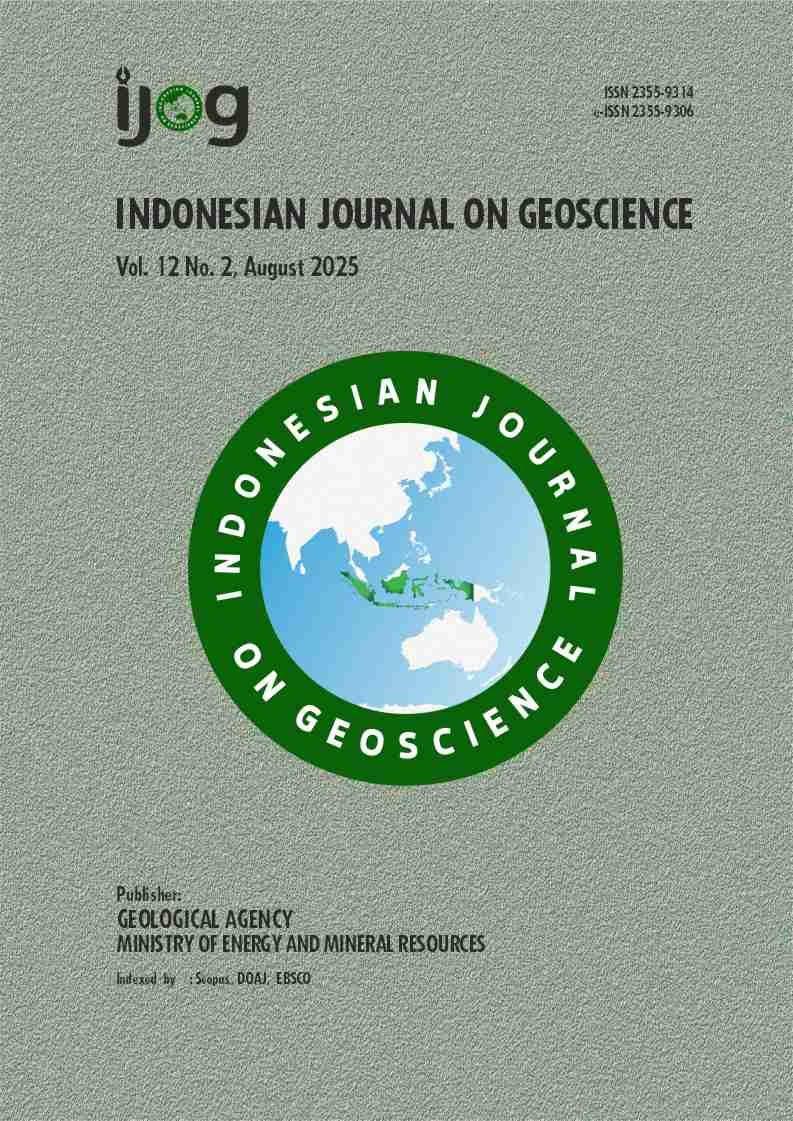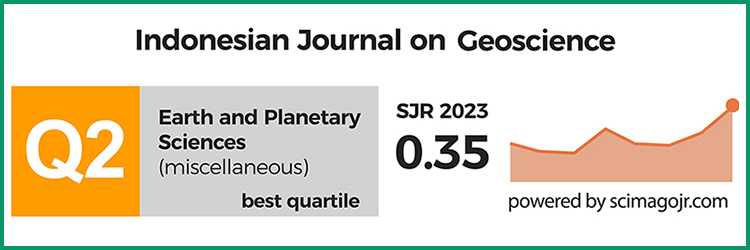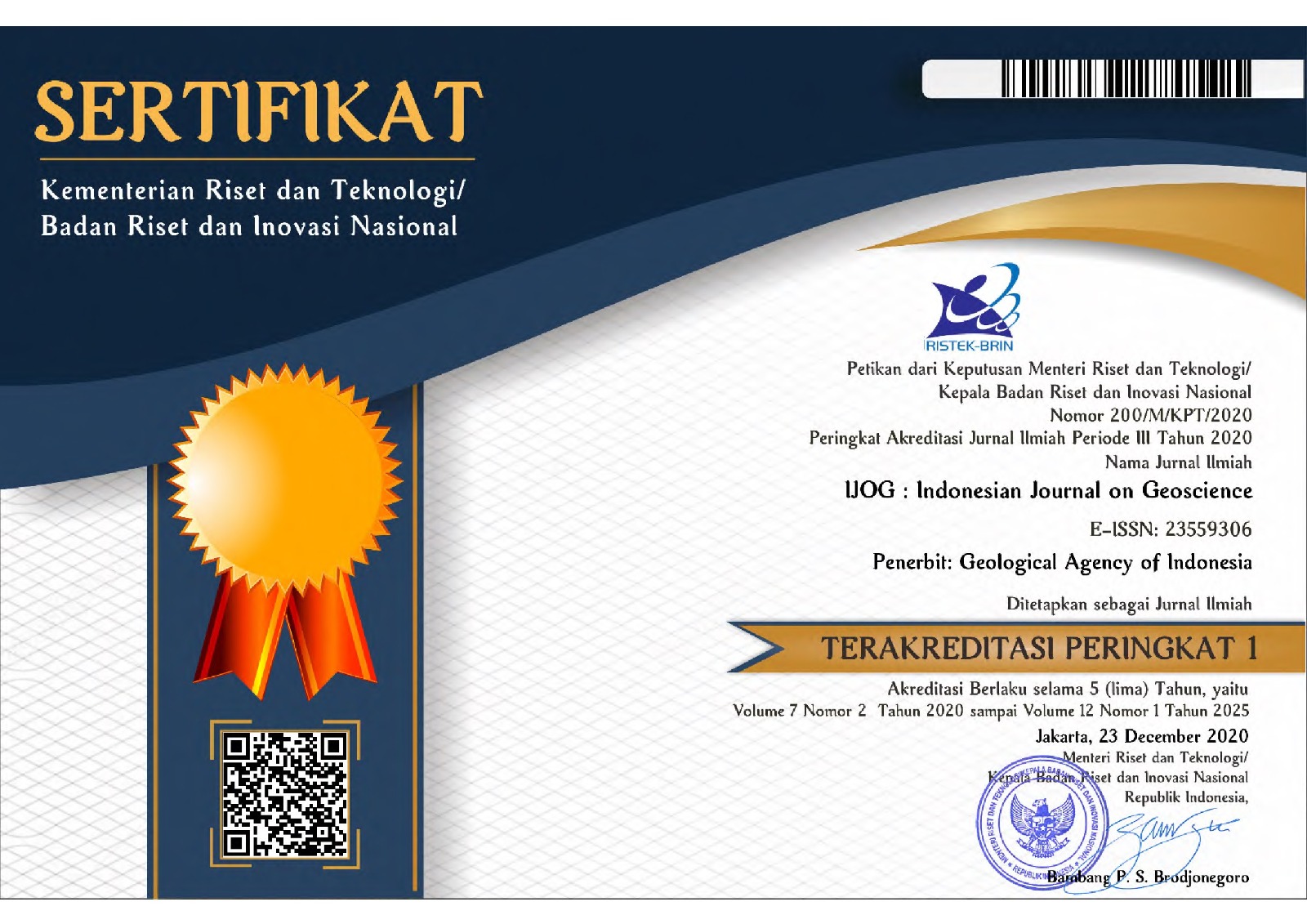A Critical Distribution of Groundwater Infiltration Status on Agricultural Land Use in Manyaran, Indonesia
DOI:
https://doi.org/10.17014/ijog.12.2.249-265Keywords:
Hydrological soil components, Paddy field, Heavy Critical, Land management strategyAbstract
Agricultural land is vulnerable to drought disasters, and effective groundwater management is needed by identifying soil characteristics that support water infiltration. This study aims to assess the criticality of groundwater infiltration distribution in agricultural land in Manyaran District, and the relationship between soil physical characteristics and soil infiltration criticality, so that management strategies can be formulated to increase groundwater infiltration. The assessment uses an assessment method based on The Regulation of The Minister of Forestry P. 32/ Menhut-II/2009, which combines parameters such as soil type, permeability, slope, rainfall, and land use. It is modified by observations of important soil physical properties that affect hydrological processes, including soil texture, bulk density, and porosity, integrated into the analysis. Sampling points were determined using purposive random sampling in the land map unit obtained from thematic map overlay. The influence of land use factors on groundwater infiltration criticality using ANOVA data processing, while the physical properties that most determine infiltration conditions were identified through the Pearson correlation test. The results classify groundwater infiltration status into six categories: good, normal, light critical, moderate critical, critical, and heavy critical. Heavy essential catchment areas, especially in rice fields, are characterized by low soil permeability, porosity, and bulk density. These findings underscore the need for improved soil management practices for groundwater infiltration, such as the addition of organic matter and the implementation of ecological drainage systems, to increase water infiltration and reduce the risk of drought in the area.



















